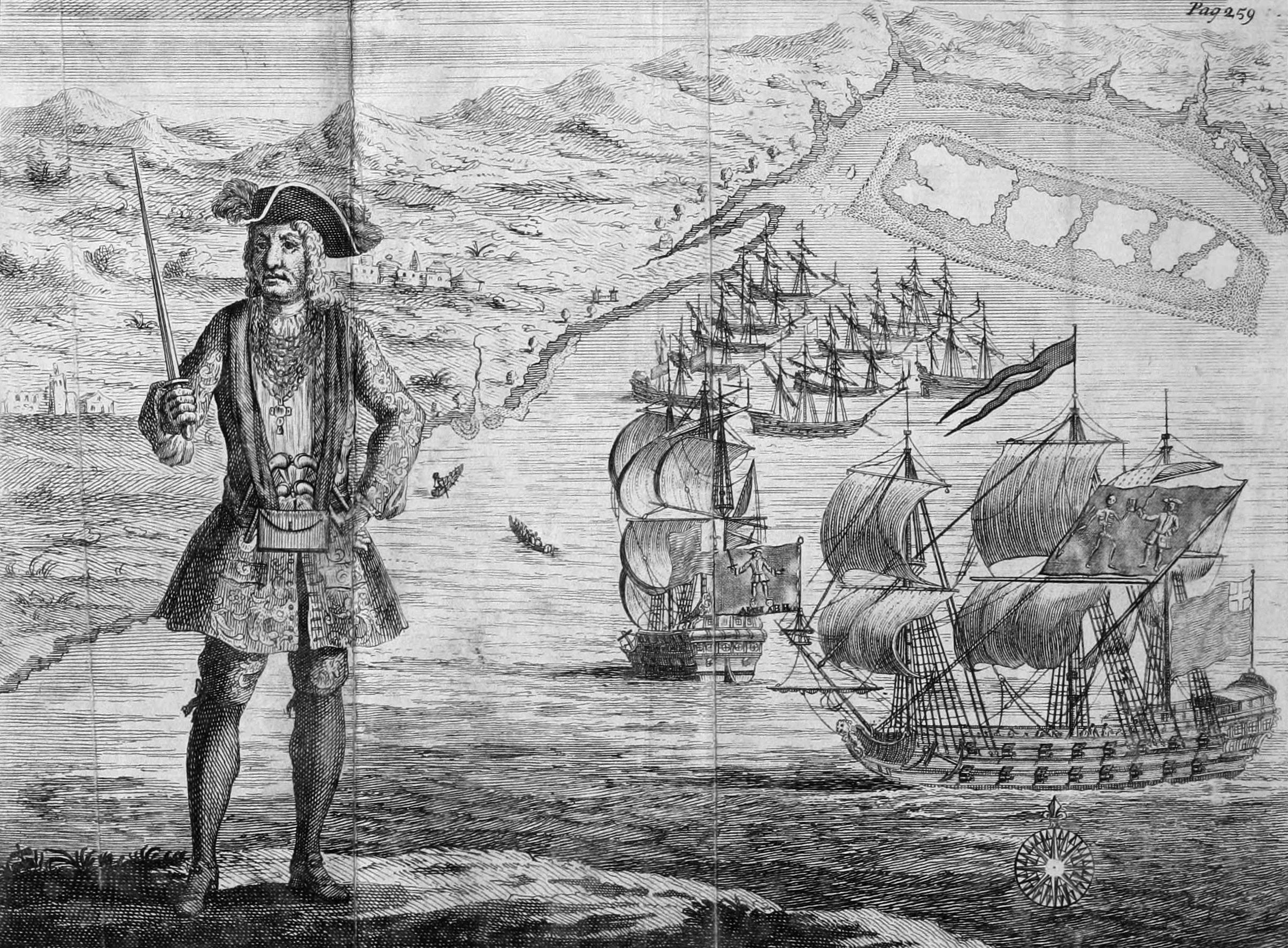Pirates of Atlantic Canada
Illustration of Bartholomew Roberts. Engraving by Benjamin Cole [2] (1695–1766), Public domain, via Wikimedia Commons
Legends and Loot – The Real Pirates of Canada’s Eastern Shores
Piracy has occurred since ancient times and is the practice of attacking and robbing ships at sea. Many of the ideas we have of pirates comes from books and movies. These tell of lives of adventure, romance and buried treasure. These stories are often a mix of fact and fiction and while pirates existed, the stories are mostly imagined.
During the 1600s and 1700s, pirates and privateers were active along Canada’s eastern coast. The ‘Golden Age of Piracy’ along Canada’s east coast occurred from 1690 to 1730. Pirates ransacked and raided fisheries, ships and settlements and recruited local men to their crews.
Peter Easton is one of the better-known pirates. Easton started out as a privateer under a Letter of Marque given to him by Queen Elizabeth 1 in the early 1600s with the mission to protect an English fishing fleet. In 1603, Elizabeth 1’s successor, King James 1, abolished all letters of marque, which led Easton to become a pirate. In 1612, he arrived with 10 ships at Harbour Grace, on Conception Bay, on Newfoundland’s southeast coast. From Harbour Grace, he began a series of attacks against port communities on Newfoundland’s east coast. In 1614 he moved his headquarters to Ferryland, on Newfoundland’s east coast. From here he sent requests to King James 1 to be pardoned. While waiting for news about his pardon, he heard that Spanish galleons were transporting Spain’s annual supply of silver taken from mines in the West Indies. He led 14 pirate ships and 500 men to the Azores islands where he captured the Spanish ships and the silver. He took the booty to Tunisia in northern Africa where he made a deal which made him extremely rich. He purchased a palace at Savoy, on the present-day French Riviera where he led an extravagant lifestyle. He died around 1620.
Bartholomew Roberts — also known as Black Bart — is another well-known pirate. Born John Roberts, in Wales, he became a pirate and managed to capture more than 400 ships off the coasts of Africa, North American and South America, including Newfoundland and Labrador. He had a reputation as being a ruthless pirate. He created his own flag, one of which is shown here. He also used the well-known Jolly Roger flag featuring a skull above two crossed bones. Only three years after becoming a pirate he was killed in a battle with a British ship off the coast of Guinea.
What is a Letter of Marque?
Letter of Marque
A letter of marque is a commission of war issued by a head of state or government to a private citizen. The letter of marque authorizes the citizen to use their own ship and crew for war to protect the interests of the state that issued the letter. Both ships and people who engage in warfare under a letter of marque are known as privateers. Privateering was carried on by all nations. Privateers were seen as noble and heroic as opposed to pirates who were condemned as thieves and vagabonds. Crews were not paid by the government that issued the letter of marque but instead they received a portion of the value of any cargo or shipping that they could get from the original owners. This practice encouraged them to stray beyond the strict limits of the marque, often making it difficult to distinguish between privateers and pirates.
Black Bart’s flag shows him holding a flaming sword and standing on two skulls.
All images: Public domain, via Wikimedia Commons

